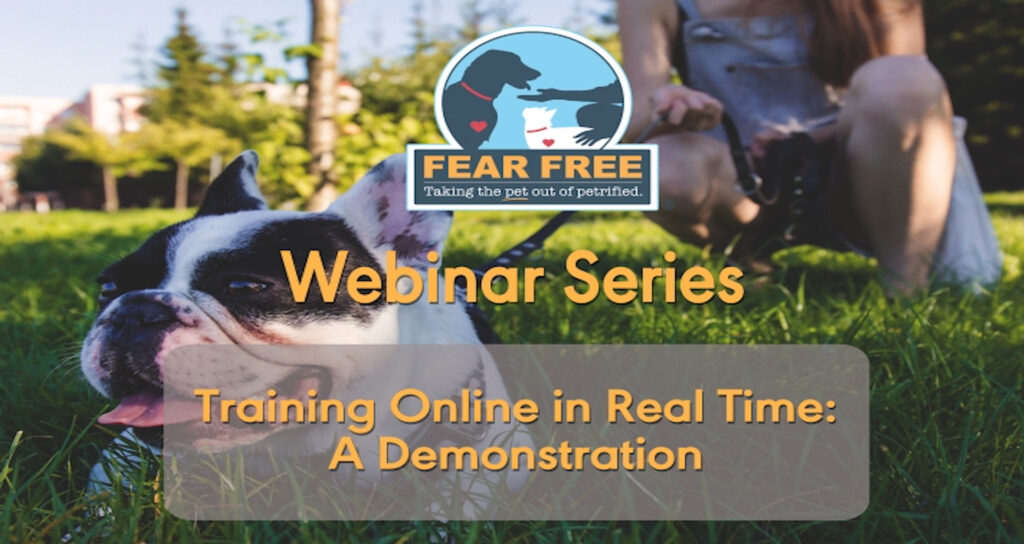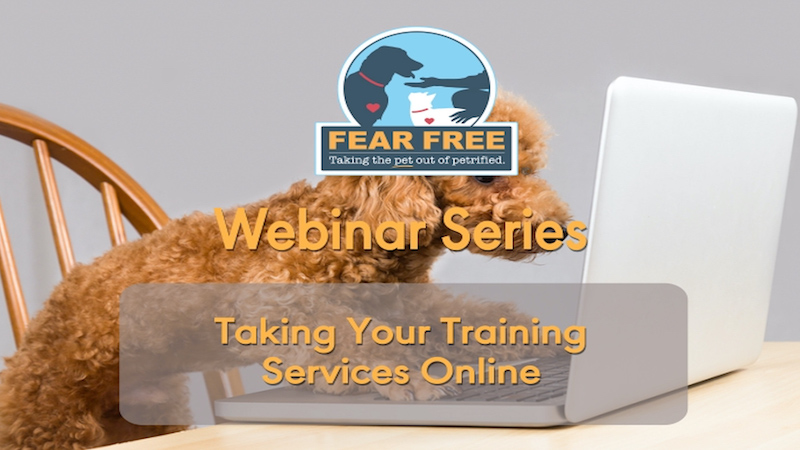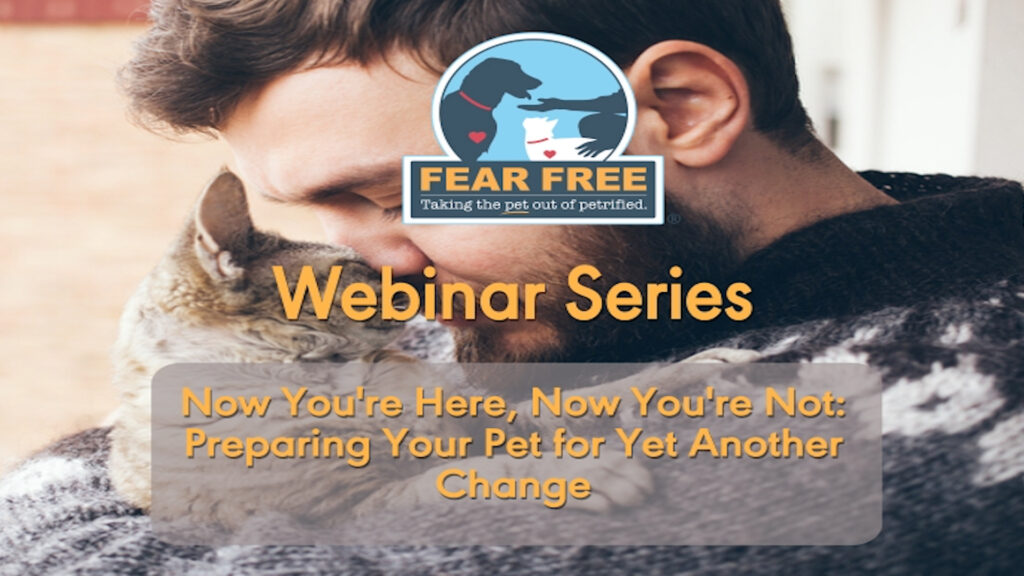Linda Lombardi
Taking your dog training business online might seem hard to imagine, but even before the pandemic, some trainers were doing it successfully. Far from being a last resort, there are advantages for trainers, clients, and dogs. Here’s how to succeed.
The Learning Environment
Working in the home environment can be a big positive for dogs.
“I have found that dogs are less distracted when working in their home environment. Foundations are learnt quicker in general,” says Laura Ryder, head trainer at Morley Vet Centre in Perth, Western Australia.
Jessica Ring, a Fear Free certified trainer in Maryland who recently started teaching group classes online, cautions that there are some exceptions. For clients with chaotic homes, the class environment was less distracting. And as students become more advanced, creating training distractions at home can become more challenging. But in general Ring finds it’s a positive: “It seems like dogs are getting through the material more quickly in the session.”
Ring has also observed that without the distraction and stimulation of other people and dogs, it’s possible for students and dogs to take a real break when she’s focused on someone else. “Especially for little dogs, they don’t fill up as quickly if they can take a break,” she says.
Fear Free certified trainer Kate LaSala says some kinds of training, such as for separation anxiety, have long been done remotely. It also has advantages for fear and aggression cases. “Often, with aggression, it’s less stressful for the dog not to have a stranger there,” she says. “If I’m dealing with a stranger-danger case, the fact that I’m going there to talk to the person automatically brings that dog over threshold in most cases. It makes the dog anxious, makes the person anxious, makes me anxious.” Online consultations eliminate all of that and are no obstacle to the work she needs to do.
“A big part of what I do in fear and aggression cases is educating and coaching the client. If the dog is a stranger-danger case, I’m not going to be hands-on anyway.”
Online training has the same advantages for dogs with similar but less extreme issues. “I’ve had some people take online classes who probably couldn’t bring a dog to a group class,” says Ring. “Dogs who are reactive to other dogs, excited, or worried can participate.”
Client Convenience
LaSala finds that online training has advantages for scheduling, since she no longer must factor in commuting time or setting up and cleaning a facility. “I can accommodate appointment times I’d never do before,” she says. “Eight a.m. on Saturday — that was not going to happen. But I can do that remotely, and I can accommodate much later appointment times, too.”
For the same reasons, Ring can offer shorter sessions and single-session classes. “I only have to commit to half an hour when I can fit it in,” she says. She now offers 30-minute classes, including basic skills and tricks. “Some of them are to jump-start people in their training and give them an idea of what it would be like to work this way,” she says. She still offers standard hour-long classes as well, but it’s useful for clients have more options. “It’s a lot for people and dogs to stay focused for that long, so the half hour is enough for some people,” she says.
Another benefit of online training is that platforms such as Zoom allow sessions to be recorded. LaSala makes the video available to clients. “If they want to be able to refer back to our session, they can do that, unlike an in-person session, which is fleeting,” she says.
Business Considerations
LaSala finds that a benefit of taking her business online is that she can take on more work. “I can fit more clients into a day because I’m not spending hours commuting between appointments,” she says. Partly due to this, she has reduced her fees for sessions. “Because I’m not spending money buying cheese and steak and hot dogs, and with the time and money I’m saving not having to commute, I roll that into my price, so it is less expensive,” she says.
Not all trainers have made the same calculation about fees. Ring says that although she is saving commuting and setup/cleanup time, she finds that she spends more time communicating with clients between sessions, so thinks it evens out.
A new challenge can be attracting business in the first place. “How to market to this new audience is still something I’m trying to figure out,” says Ring. She’s starting to get clients from farther away than in the past, but she sees a new need to educate potential clients.
“This is a shift for people, to get over the traditional thinking that the dog trainer needs to come and work with the dog,” says LaSala. “Once they’re on board, everyone loves it – it’s cost-effective, it’s less stressful, we can get the same results – but now there’s an extra step where you need to sell the person on the idea of how this is going to be effective and efficient.”
LaSala has pages on her website explaining procedures: what an initial consult consists of, what remote learning looks like, how to prepare for a session. Much of this hasn’t changed. An initial consult is still two hours of talking. And training a dog who’s fearful on walks, for instance, involves instilling a number of behaviors at home before taking them on the road – just like before, except now she needs to explain in advance that she doesn’t need to be there for the walk. “It’s a lot of dispelling preconceived notions of what the owner thinks dog training looks like,” she says. “I don’t need to see your dog be afraid outside. I know what that looks like, I don’t need you to show me that.”
Along with clearly explaining procedures on your website, don’t forget the power of online reviews.
“A couple of well-written testimonials from clients, I feel, are the best way to convince other dog owners that online learning is effective and worthwhile,” says Ryder.
One of hers reads in part: “I honestly wasn’t sure how online training would work for me, but it really was a wonderful experience. Participating in dog training has always been a bit of an outlet for me, especially when the rest of life can get so crazy and busy. Now more than ever, to feel connected and supported by such wonderful dog professionals does wonders for your own wellbeing as well as your dog’s.”
This article was reviewed/edited by board-certified veterinary behaviorist Dr. Kenneth Martin and/or veterinary technician specialist in behavior Debbie Martin, LVT.
Linda Lombardi writes about the animals that share our planet and our homes for magazines including The Bark, websites including National Geographic and Mongabay.com, and for the Associated Press. Her most recent book, co-authored with Deirdre Franklin, is The Pit Bull Life: A Dog Lover’s Companion.









